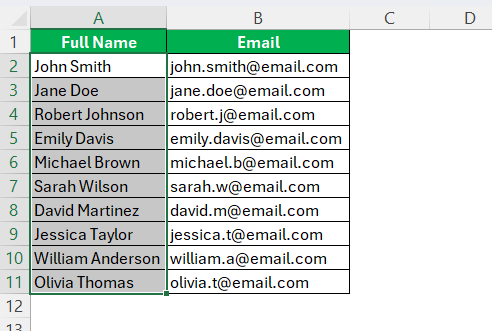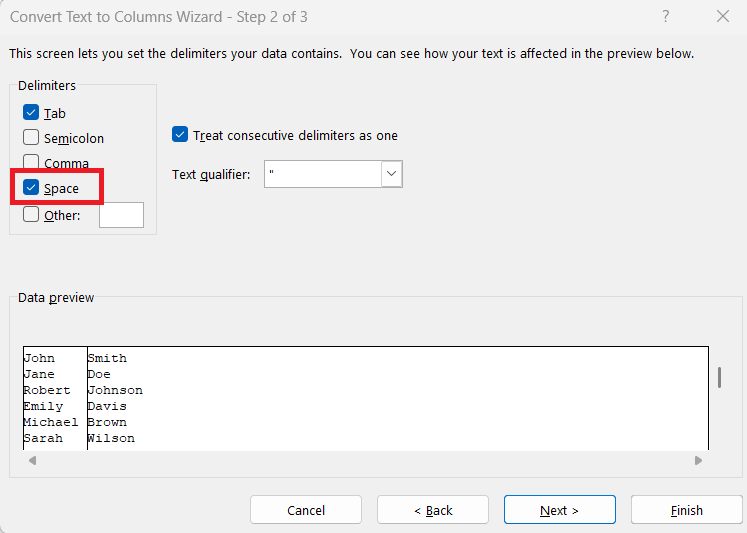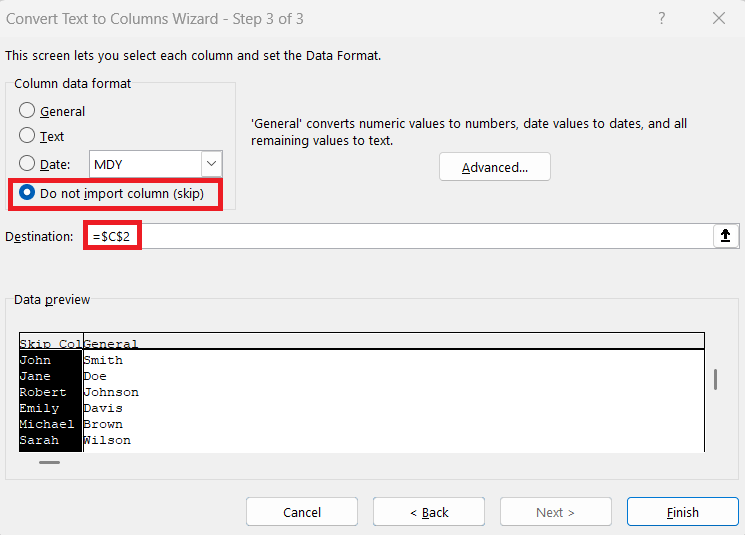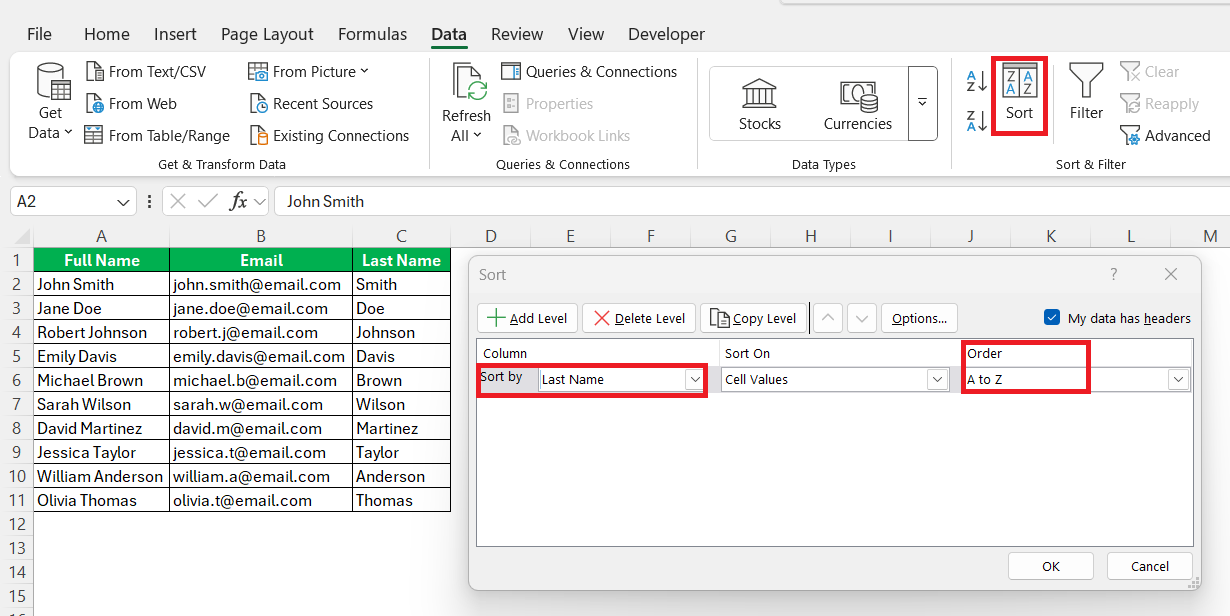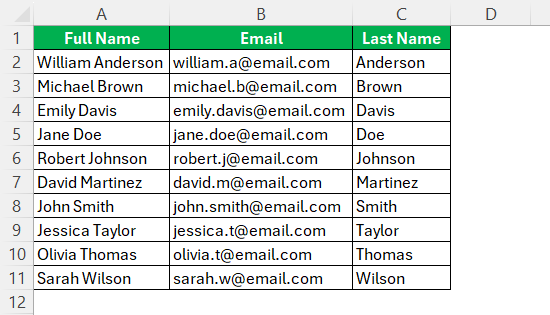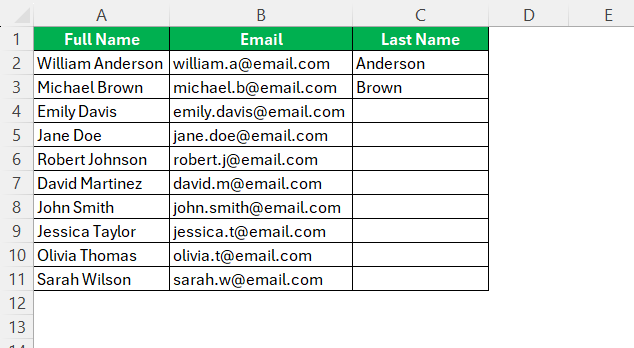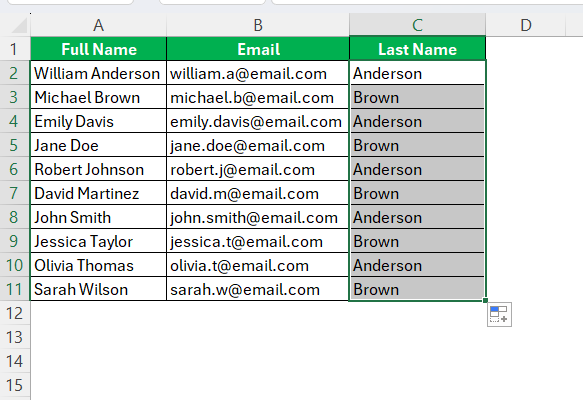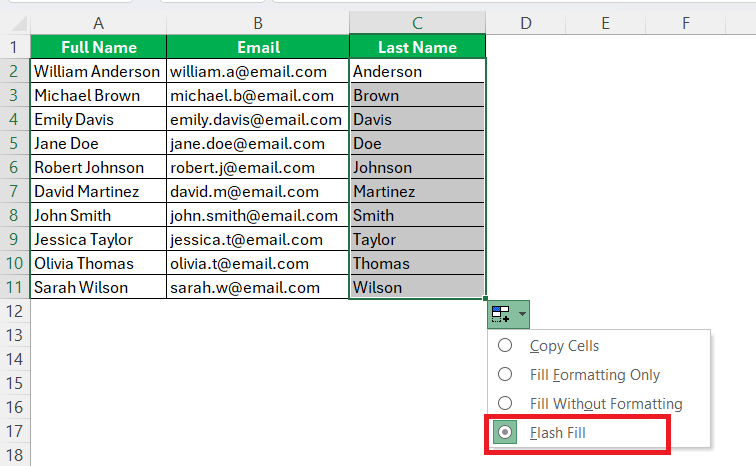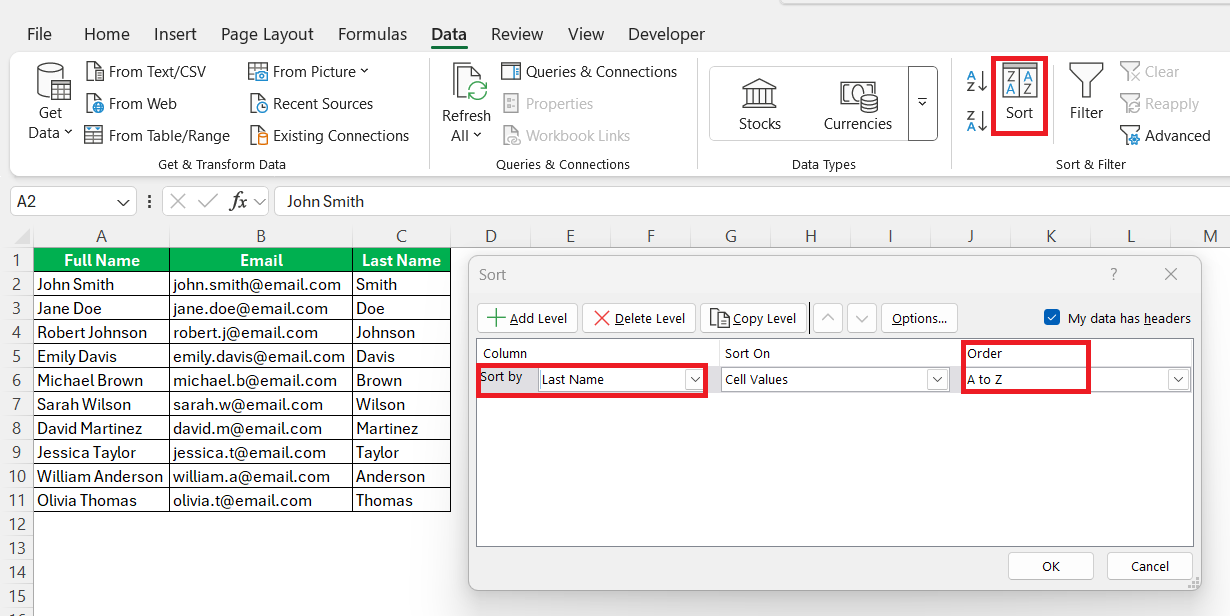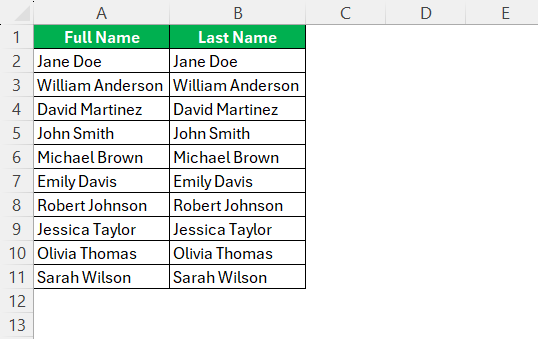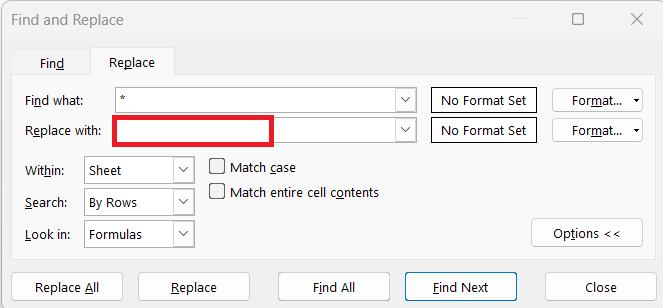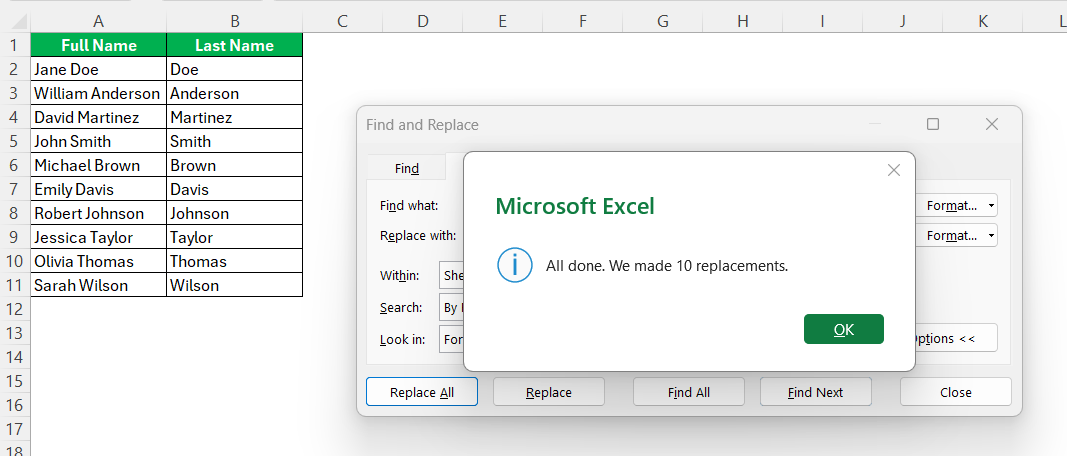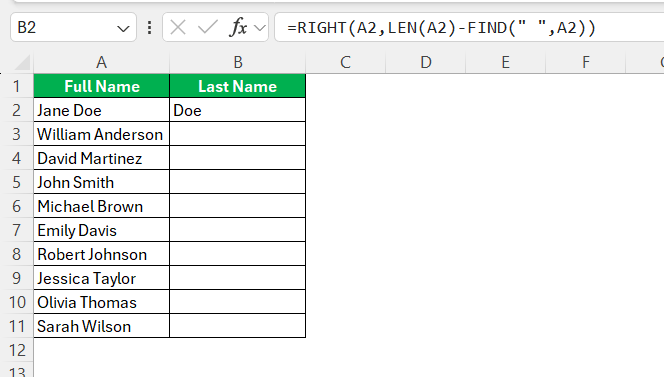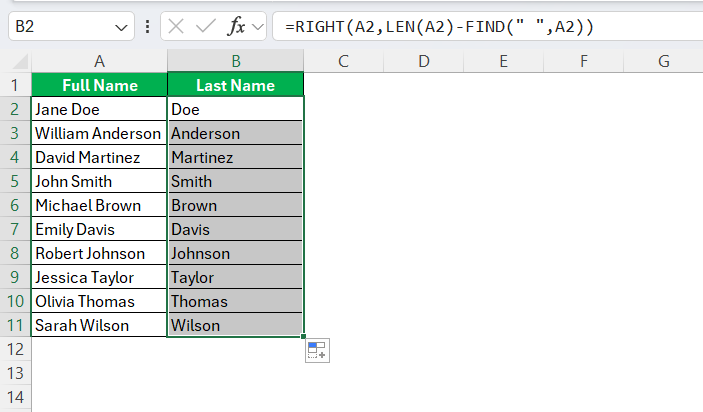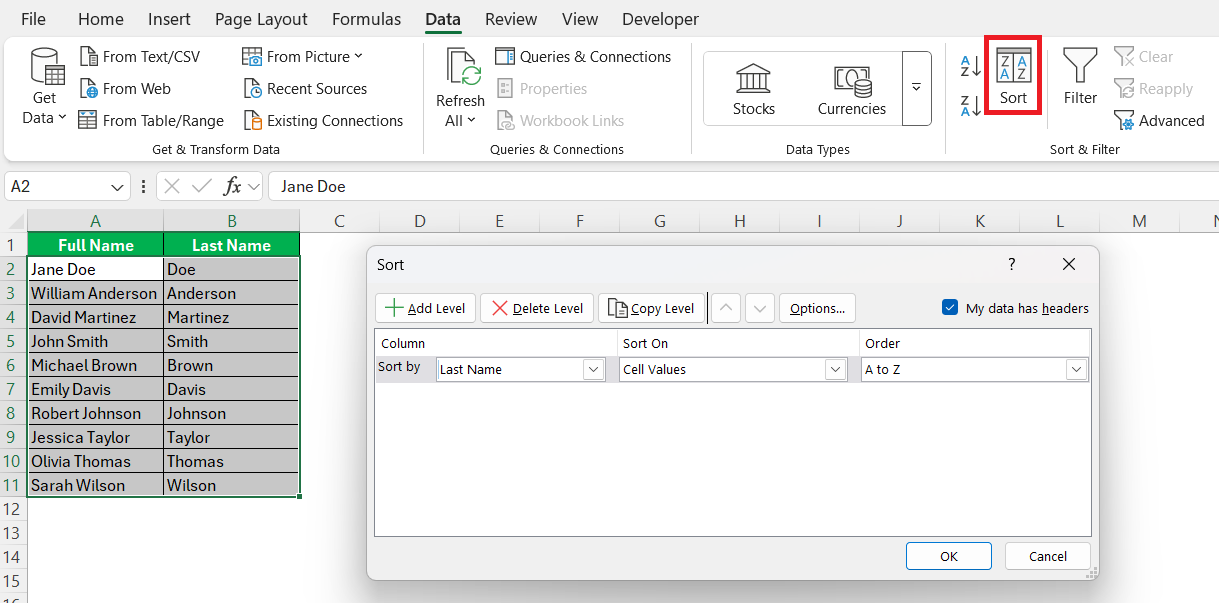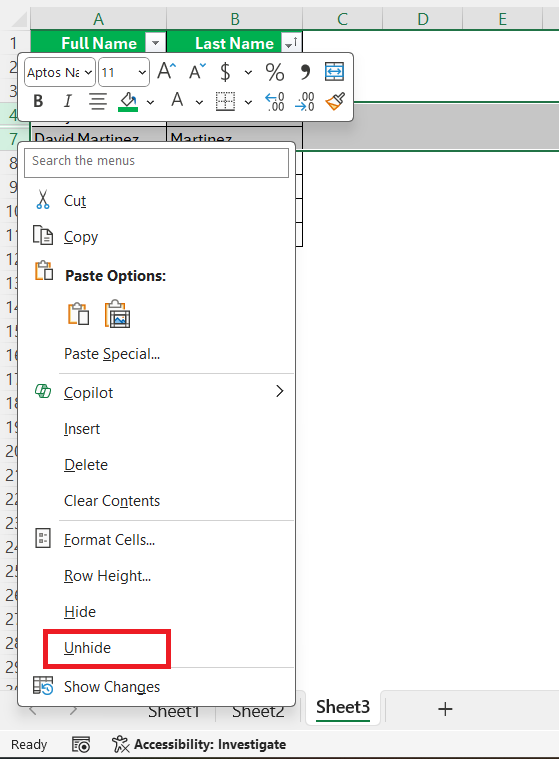Sorting data in Excel is crucial for effective management and organization, especially with large datasets. Learning to sort by last name can streamline data analysis, enhance report clarity, and facilitate easier access to information. This guide breaks down intuitive methods and advanced techniques to help you sort by last name effortlessly, ensuring your data remains organized and accessible.
Key Takeaways:
- Sorting data in Excel improves organization, making retrieval and analysis easier.
- Sorting by last name enhances clarity in reports, directories, and databases.
- Methods like Text to Columns, Flash Fill, and formulas efficiently extract last names.
- Addressing special characters and formatting issues ensures accurate sorting.
- Troubleshooting common errors prevents sorting mistakes and maintains data integrity.
Table of Contents
Sorting Basics in Excel
Understanding Data Organization
Data organization in Excel goes beyond mere arrangement; it forms the foundation of effective data usage. Well-organized data allows for quick retrieval, insightful analysis, and clear presentation. By strategically structuring your dataset and adopting best practices like sorting by last name, you can facilitate seamless navigation and comprehensive understanding.
This structured order not only highlights patterns and trends but also ensures accurate analysis and reporting across various datasets.
Benefits of Sorting by Last Name
Sorting by last name in Excel offers several key advantages that streamline data management. It simplifies locating specific entries, making navigation within extensive lists much more manageable. Furthermore, it enhances the presentation of data, fostering professionalism in documents such as reports and contact directories.
This method also aids in maintaining consistency across datasets, reducing the risk of errors. For businesses, it can improve client interactions by providing quick and easy access to pertinent information, ultimately boosting productivity and efficiency in managing communication and relationships.
Methods to Sort by Last Name
Using Text to Columns
The Text to Columns feature in Excel is a powerful tool for sorting data by last name. This method involves splitting a single column of full names into separate columns, typically to isolate last names. Here’s a step-by-step guide:
STEP 1: Highlight the column containing the full names, omitting the header.
STEP 2: Navigate to the Data tab and click on Text to Columns.
STEP 3: In the wizard, select ‘Delimited’ for step 1 and click ‘Next.’
STEP 4: To separate first and last names, choose ‘Space’ as the delimiter and proceed with ‘Next.’
STEP 5: Adjust the data destination if needed and complete the process by clicking ‘Finish.’ Choose ‘Do not import columns’ to skip unwanted data.
STEP 6: Select the Last Name column and click on Sort button. In the dialog box, select by as Last Name and order as A to Z.
This feature not only separates the components of full names but also empowers you to organize and manage your data more effectively by focusing on the last name.
Utilizing Flash Fill for Efficiency
Flash Fill is a feature introduced in Excel 2013 that automatically fills data when it detects a pattern, making it highly efficient for tasks like sorting by last name. Here’s a guide on how to utilize Flash Fill for this purpose:
STEP 1: Start by entering at least two last names from the dataset into a new column to provide Flash Fill with a pattern.
STEP 2: Highlight the initially filled cell(s). When you see the small box at the bottom-right, drag it down to fill the rest of your column.
STEP 3: In the AutoFill menu, select ‘Flash Fill.’ Excel will automatically fill in the last names based on the detected pattern.
With the last names correctly extracted, you can sort the original data using the newly filled column to rearrange by last name.
Flash Fill improves efficiency by reducing manual input, thereby minimizing errors and speeding up the process. This method is especially helpful for datasets with consistent patterns in naming conventions, making it an invaluable tool for quick data manipulation in spreadsheets.
Applying Find and Replace
The Find and Replace function is another effective method for sorting by last name in Excel. It enables quick removal of first names, retaining only the last names for sorting purposes. Follow these detailed steps:
STEP 1: Copy the column of full names to an adjacent column to preserve the original data.
STEP 2: Select the copied column and Press Ctrl + H to access the Find and Replace dialog box.
STEP 3: In the ‘Find what’ field, enter an asterisk (*) followed by a space. This pattern will target all text before the first space.
STEP 4: Leave the ‘Replace with’ field empty. Click ‘Replace All’ to execute this action, thus eliminating first names.
Review the adjusted column to ensure only last names remain.
STEP 5: With the names streamlined, sort the data by this column for organized results.
This approach is particularly effective for datasets with consistent names and spaces. By focusing on efficiency and simplicity, Find and Replace is a powerful option for achieving orderly data arrangements without altering the original entries.
Advanced Techniques for Complex Data
Extracting and Alphabetizing with Formulas
For more complex data sets or when automation is preferred, using formulas to extract and alphabetize by last name is a beneficial technique in Excel. This method allows for dynamic sorting, which automatically updates as new data is added. Here’s how to proceed:
STEP 1: Use the formula =RIGHT(A2,LEN(A2)-FIND(" ",A2)) in an adjacent cell to extract the last name from a full name in cell A2. This formula finds the first space and extracts the text after it.
STEP 2: Drag the fill handle down to apply the formula to all applicable cells in the column.
STEP 3: With last names isolated, use Excel’s sort feature on this new column to arrange your full dataset alphabetically by last name.
Using formulas not only automates the process but also maintains the integrity of your original dataset. This method is particularly useful for large and dynamic databases where frequent updates are expected, offering both flexibility and precision in organizing data alphabetically.
Troubleshooting Common Issues
Fixing Incorrect Sort Results
Sometimes, sorting in Excel may not deliver the desired results due to common missteps or overlooked details. Rectifying these issues involves a few straightforward strategies:
- Verify Data Selection: Ensure the entire dataset relevant to the sort operation is selected. Generally, sorting only the first row or column results can disrupt order.
- Check for Hidden or Blank Rows: Review your data for any hidden or blank rows or columns. These can interrupt the sorting process, so clear or unhide these elements before sorting.
- Identify Incorrect Header Usage: The top row is typically a header. If it resembles the data, Excel might mistakenly include it in the sort. In such cases, deselect the header before sorting, or ensure that “My data has headers” is checked in the sort dialog box.
- Refresh Sort Using Multi-Level Criteria: If sorting is based on multiple columns, ensure the correct hierarchy of priority is applied and adjusted as necessary.
By paying attention to these details, you can effectively resolve sorting anomalies, ensuring your dataset reflects an orderly and logical sequence. Through careful preparation and consideration, maintaining the integrity of your data’s order becomes much simpler and more reliable.
Handling Special Characters and Formats
Handling special characters and formats is critical when sorting data in Excel, as these can otherwise lead to incorrect sorting outcomes. To effectively manage these elements, consider the following strategies:
- Standardize Data Formatting: Inspect your dataset for inconsistent formatting, such as mixed use of spaces, commas, or periods, and standardize these elements across all cells to ensure uniformity.
- Remove Special Characters: Use Excel’s Find and Replace feature to locate and eliminate special characters like hyphens or apostrophes that may affect sorting order.
- Text Handling Tools: Consider text-handling functions such as
CLEANandTRIMto remove non-printable characters and trim excess spaces, respectively. This ensures clean and consistent data. - Use SUBSTITUTE for Special Cases: Employ the
SUBSTITUTEfunction to temporarily replace or adjust special characters that need specific attention during sorting, treating names or entries as composite units. - Consider Data Type Conversions: If numbers embedded with formatting cause issues, convert these data types to text or numbers as needed to achieve accurate sorting results.
Addressing special characters and varied formats ensures more accurate sorting outcomes and mitigates errors that could obscure true data insights. By implementing these practices, you enhance both data integrity and the reliability of your sorting tasks, enabling clear and organized presentation of complex datasets. Careful management of these formatting challenges not only improves visualization but also enhances the overall efficiency of data usage in Excel.
FAQs
How to sort in Excel?
Sorting in Excel can be accomplished quickly by following these simple steps: Select any cell within the column you wish to sort. Navigate to the Data tab and locate the Sort & Filter group. Click either the A-Z button for ascending order or the Z-A button for descending order. Your data will be sorted instantly. Ensure all relevant data is selected to avoid misalignment.
Can I sort by last name without altering the original data?
Yes, you can sort by last name without altering the original data by first creating a copy of your dataset. Use formulas or Excel features like Flash Fill in the copied dataset to isolate last names. Then, apply sorting to this copied version. This approach preserves the integrity of the original data while allowing you to sort accordingly.
What should I do if my data includes middle names?
If your data includes middle names, use the Text to Columns feature to split the full names into separate parts: first, middle, and last names. Choose space as your delimiter during this process. Once separated, sort your data by the column containing the last names, keeping middle names intact for reference and organization.
How does sorting by last name affect linked data or formulas?
Sorting by last name can disrupt linked data or formulas if they rely on specific cell references. Ensure formulas use absolute references or structured table references to maintain integrity when sorting. Prior to sorting, convert references where necessary to prevent breaking links and ensure accurate data connections throughout your spreadsheet.
How to Sort by last character in Excel?
To sort data by the last character in Excel, first create a helper column to extract the last character using a formula like =RIGHT(A2, 1), assuming the data starts in cell A2. Drag the formula down to apply it to the entire column. Then, sort your dataset by this helper column to organize the entries based on their last character.
John Michaloudis is a former accountant and finance analyst at General Electric, a Microsoft MVP since 2020, an Amazon #1 bestselling author of 4 Microsoft Excel books and teacher of Microsoft Excel & Office over at his flagship MyExcelOnline Academy Online Course.

